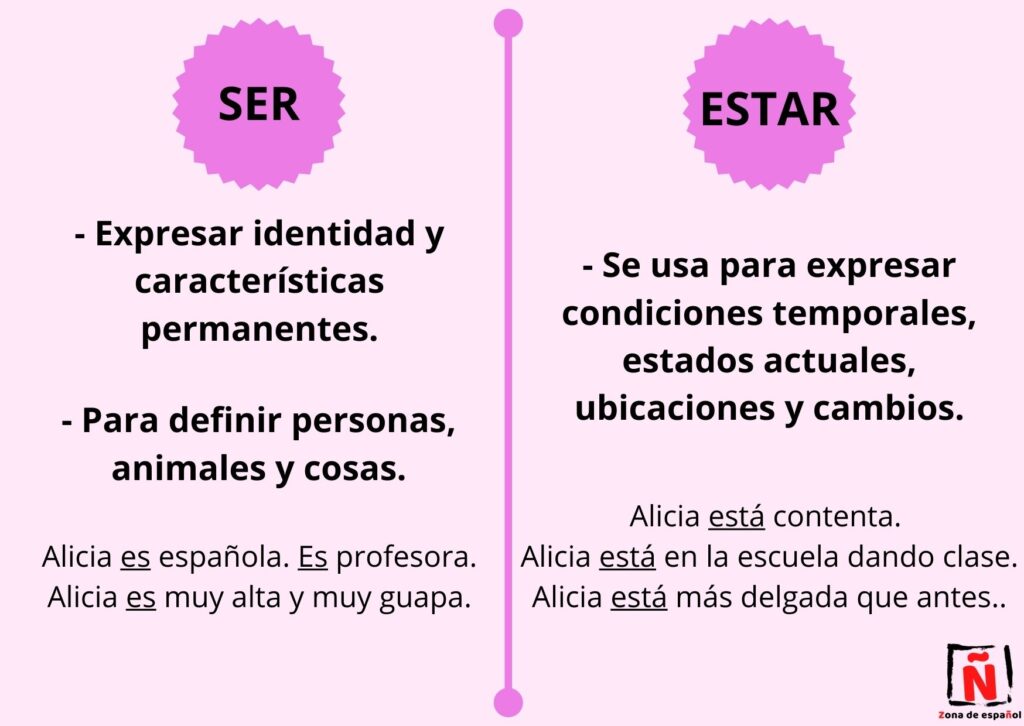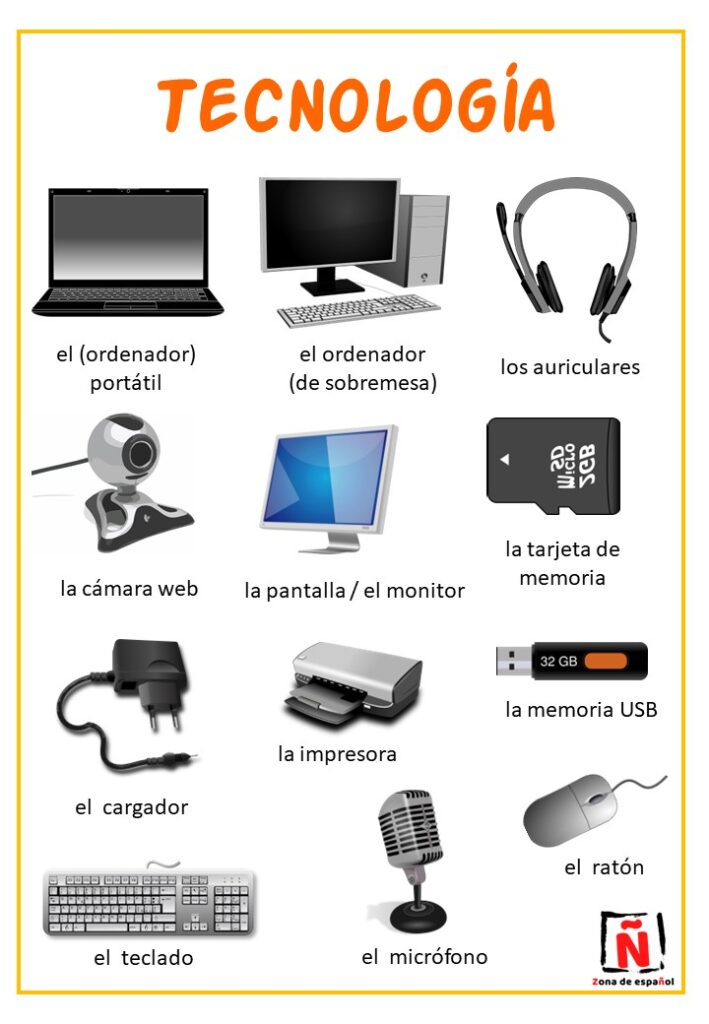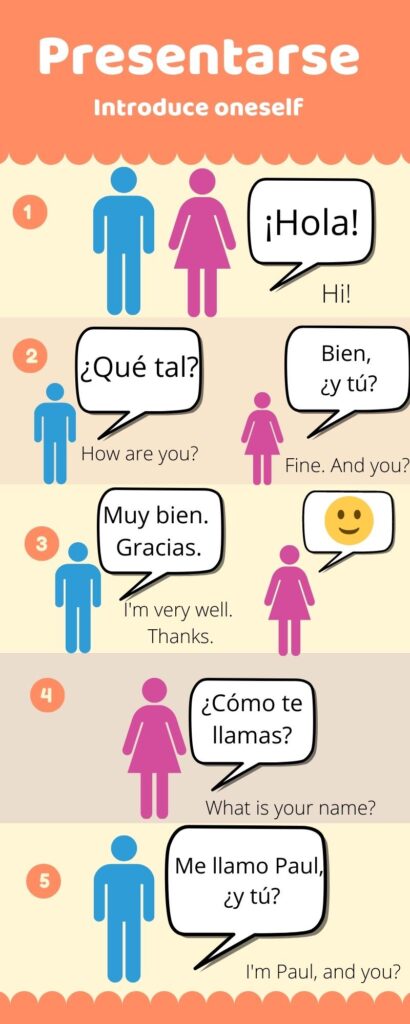Learning a new language is a rewarding challenge, and Spanish is no exception. Despite its status as one of the most widely spoken languages in the world, and its relatively accessible grammar, learners often stumble upon recurring mistakes when learning Spanish. These errors can slow progress, but recognizing them is the first step toward improvement.
Don’t stress if you make mistakes in Spanish—it’s a normal part of learning a language. It’s important to recognize your mistakes so you can work on correcting them gradually.
Below, we’ll discuss some of the most common mistakes in Spanish and offer tips on how to avoid them.
1. Confusing Ser and Estar is one oft the most common mistakes when learning Spanish
One of the biggest challenges for Spanish learners is distinguishing between the verbs ser and estar. In English, both translate to “to be,” but in Spanish, they have very different uses.
- Ser is used to describe permanent or lasting characteristics:
- Identity: Ella es doctora (She is a doctor).
- Origin: Soy de España (I am from Spain).
- Time: Hoy es lunes (Today is Monday).
- Possession: El libro es de Juan (The book belongs to Juan).
- Estar is used for temporary states or locations:
- Emotions: Estoy feliz (I am happy).
- Location: La escuela está en la esquina (The school is on the corner).
- Actions in progress (estar + gerund): Estoy estudiando (I am studying).
Tip: Practice with specific examples and contexts to make the correct usage automatic. Think of ser as something that defines an essence and estar as something temporary or a state.

2. Incorrect Use of Prepositions
Prepositions in Spanish often don’t translate directly from English, which can lead to errors.
Common mistakes:
- Confusing por and para: In English, both can mean “for,” but in Spanish, they have different uses.
- Para is used to express purpose or destination: Fui al centro comercial para comprarte un regalo (I went to the mall to buy you a gift). Este regalo es para ti (This gift is for you).
- Por is used to express cause or a means: Quiero aprender español por mi trabajo (I want to learn Spanish because of my job). Voy a enviar la inscripción por correo electrónico (I will send the registration by email).
Tip: Study prepositions in specific contexts and practice with common phrases. Repetitive exercises, such as filling in the blanks with the correct preposition, and reading a lot in Spanish can help you understand the correct use of prepositions.
3. Noun Gender one of the mistakes when learning Spanish
In Spanish, all nouns (people, animals, and things) have a gender (masculine or feminine), which can be confusing for speakers of languages that don’t have this feature, like English.
Common mistakes:
- Using the incorrect article: “el problema” instead of “la problema”.
- Confusion with irregular nouns: “el mapa” (masculine) and “la mano” (feminine).
Tip: Memorize the gender of nouns as you learn them. Use tools like flashcards and review regularly. Also, pay attention to the articles and adjectives that accompany nouns to better understand their gender. Remember, the article (el, la, los, las) agrees with the noun in gender (masculine or feminine) and number (singular or plural).
4. Verb Conjugation
Spanish verb conjugation can be complicated due to the multiple forms verbs take depending on tense, mood, and person.
Common mistakes:
- Confusing verb tenses, especially between past tenses like the preterite and imperfect: “Yo comía” (imperfect) vs. “Yo comí” (preterite).
- Forgetting irregularities: Verbs like “tener” or “ir” have irregular conjugations.
Tip: Practice verb conjugations regularly. Use conjugation tables and language learning apps focused on verb practice. As you learn new verbs, note whether they are regular or irregular. If a verb is irregular, highlight the irregularities with a marker.
5. Pronunciation and Accentuation
Pronunciation and accentuation can be a major hurdle, especially for English speakers. Spanish has sounds that don’t exist in English and specific accent rules that change the meaning of words.
Common mistakes:
- Mispronouncing the rolled “r”: “perro” vs. “pero”.
- Forgetting accent marks: “tú” (you) vs. “tu” (your).
Tip: Listen to a lot of spoken Spanish and practice pronunciation regularly. Use voice recognition apps and record yourself to compare with native speakers. Learn accent rules and practice with examples.
6. False Cognates (false friends)
False cognates are words that look similar in two languages but have different meanings. In English, they are known as “false friends.” These can lead to misunderstandings and errors.
Examples:
- “Embarazada” does not mean “embarrassed,” but “pregnant.”
- “Asistir” does not mean “to assist,” but “to attend.”
Tip: Make a list of common false cognates and review their meanings. Learn words in context, for example, by making a sentence to remember their correct meanings.
7. Mistakes when learning Spanish: Word Order
Word order in Spanish can be different from English, especially in questions and with adjectives.
Common mistakes:
- Placing adjectives in the wrong position: “una casa blanca” (correct) vs. “una blanca casa” (incorrect in most cases). Remember, the adjective usually comes after the noun.
- Question structure: “¿Qué es tu nombre?” instead of “¿Cómo te llamas?”.
Tip: Read and listen to authentic Spanish to familiarize yourself with sentence structure. Practice writing and speaking to internalize the correct word order.
8. Use of the Subjunctive
The subjunctive mood is one of the most challenging aspects of Spanish for learners, especially from level B2 onwards, as it doesn’t have a direct equivalent in English.
Common mistakes:
- Not using the subjunctive when necessary: “Quiero que vienes” instead of “Quiero que vengas.”
- Incorrect use of the subjunctive: “Si yo tengo” instead of “Si yo tuviera.”
Tip: Learn the situations where the subjunctive is used, such as wishes, doubts, negations, and impersonal expressions. Practice with specific sentences.
9. Pronoun Confusion
Spanish pronouns have different forms depending on their function in the sentence, which can lead to confusion.
Common mistakes:
- Confusing direct and indirect object pronouns and sometimes mixing them up with reflexive pronouns.
- Direct object pronouns: me, te, lo, la, nos, os, los, las.
- Indirect object pronouns: me, te, le, nos, os, les.
- Reflexive pronouns: me, te, se, nos, os, se.
Tip: Study pronoun rules and practice with specific exercises. Observe pronoun use in real contexts and try to use them correctly in your conversations. Creating a chart comparing these three types of pronouns can also be helpful.
10. Limited Vocabulary
A limited vocabulary can hinder communication and lead to misunderstandings. Knowing the necessary Spanish vocabulary for daily life is essential.

Common mistakes:
- Repeatedly using the same words: Using “bueno” for everything instead of more precise words like “excelente,” “maravilloso,” “interesante.”
- Lack of specific vocabulary: Not knowing technical terms or words from specific areas like business or technology, which is common at more advanced levels like B2.
Tip: Expand your vocabulary by reading books, articles, and watching movies or series in Spanish. Use vocabulary learning apps and make lists of new words with their definitions and usage examples. Every time you come across a new word, highlight it, look it up in the dictionary, write down its meaning in your language, and try to use it whenever you can.

Learning Spanish, like any other language, requires time, patience, and constant practice. Making mistakes is a natural part of the learning process, so don’t stress about them. However, with awareness and effort, it’s possible to overcome them.
The key lies in consistent practice, exposure to the language in real contexts, and the willingness to correct and learn from mistakes. With dedication, any student can master Spanish and enjoy the cultural and communicative richness this language offers.
Follow us on Instagram for more tips, resources, and fun ways to learn Spanish. Stay connected with Zona de Español: Instagram





